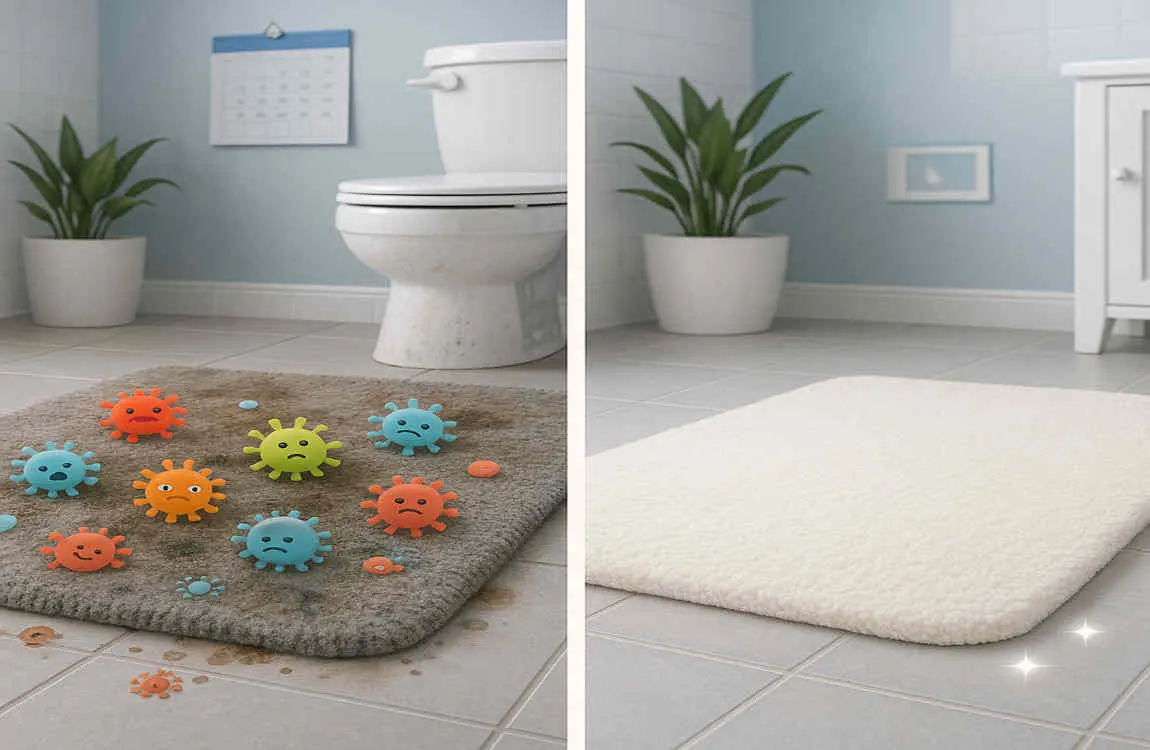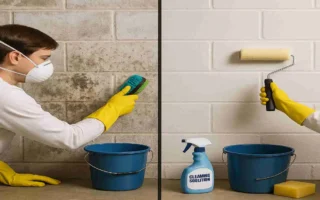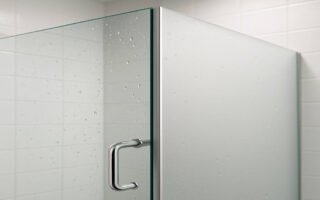When it comes to maintaining a fresh and inviting home, few things are as important as keeping your bathroom mats clean. Not only do clean mats contribute to the overall hygiene of your bathroom, but they also play a crucial role in creating a pleasant and welcoming ambiance.
Why Regular Cleaning of Bathroom Mats is Essential

Bathroom mats are often overlooked when it comes to regular cleaning routines, but their cleanliness is vital for maintaining a healthy and hygienic environment. Over time, dirty mats can become a breeding ground for bacteria, mold, and allergens, which can negatively impact the air quality and overall ambiance of your bathroom. By prioritizing the regular cleaning of your bathroom mats, you not only promote a more sanitary space but also contribute to a fresh and inviting atmosphere throughout your home.
Moreover, clean bathroom mats offer additional benefits beyond aesthetics and hygiene. Well-maintained mats can help prevent slips and falls, especially when they are free from built-up grime and moisture. Additionally, regular cleaning helps to control unpleasant odors, ensuring that your bathroom remains a pleasant and refreshing oasis within your home.
Types of Bathroom Mats and Their Cleaning Needs
Before diving into the specifics of how to clean bathroom mats, it’s essential to understand the various types of mats available and their unique cleaning requirements. Common bathroom mat materials include:
- Cotton and terry cloth mats: These absorbent and soft mats are machine-washable and can withstand regular cleaning.
- Microfiber mats: Known for their quick-drying properties and plush feel, microfiber mats are also machine-washable but may require gentler care.
- Memory foam mats: These cushioned mats provide exceptional comfort but may require handwashing or spot-cleaning to maintain their shape and integrity.
- Rubber-backed mats: Designed to prevent slippage, rubber-backed mats can be machine-washed but may need to be air-dried to avoid damage to the backing.
- Bamboo and natural fiber mats: These eco-friendly options are durable and stylish but may demand more delicate care, such as handwashing or spot-cleaning.
To ensure the longevity and effectiveness of your bathroom mats, always refer to the care labels and manufacturer’s instructions for specific cleaning guidelines. Keep in mind that the material of your mat will also influence factors such as drying time and cleaning frequency.
Step-by-Step Guide on How to Clean Bathroom Mats

Preparing Your Mats for Cleaning
Before you begin the house cleaning process, take a moment to prepare your bathroom mats:
- Shake off any loose debris, dust, or dirt outside or over a garbage bin.
- Spot-treat any visible stains using a stain remover or a mixture of mild detergent and water.
- Inspect your mats for any signs of damage or special care instructions that may influence your cleaning method.
Washing Machine Cleaning Method
For most cotton, terry cloth, and microfiber mats, machine washing is a convenient and effective cleaning option:
- Check the care label to ensure your mat is machine-washable.
- Set your washing machine to a gentle cycle with cold or warm water, depending on the mat’s material.
- Use a mild detergent and consider adding a disinfectant or natural additives, such as vinegar or baking soda, for extra freshness and odor control.
- To prevent damage, avoid overloading the washer and consider placing your mat in a mesh laundry bag for added protection.
Handwashing Method for Delicate Mats
Some mats, such as memory foam or rubber-backed options, may require handwashing to maintain their shape and integrity:
- Fill a basin or bathtub with lukewarm water and add a small amount of mild detergent.
- Submerge your mat in the water and gently scrub it with a soft-bristled brush or sponge, paying extra attention to any stained or heavily soiled areas.
- Rinse the mat thoroughly with clean water to remove all soap residue.
- Gently squeeze out excess water without wringing or twisting the mat, as this can cause damage or deformation.
Deep Cleaning and Odor Removal
For stubborn dirt, stains, or odors, you may need to employ more intensive cleaning techniques:
- Create a deep-cleaning solution by mixing baking soda and vinegar in warm water, then soak your mat for 30 minutes to an hour before washing.
- Use a steam cleaner to penetrate fibers and eliminate bacteria and deep-seated grime.
- To combat persistent odors, sprinkle baking soda on the mat and allow it to sit for several hours before vacuuming and washing.
- Utilize disinfectant sprays specifically designed for use on bathroom mats to kill germs and freshen the material.
Drying Bathroom Mats to Prevent Mold and Mildew
Proper drying is crucial to prevent the growth of mold and mildew on your bathroom mats. Follow these best practices:
- Air dry your mats by hanging them outside in the sun or in a well-ventilated area. Sunlight can help naturally disinfect and freshen the mats.
- If hanging your mats isn’t an option, lay them flat on a clean, dry surface, such as a towel or drying rack.
- Avoid using a clothes dryer for rubber-backed or memory foam mats, as the heat can damage the backing or cause the mat to lose its shape.
- To speed up drying time, consider using a fan to circulate air around the mat or gently squeezing out excess water with a clean towel before air drying.
How Often Should You Clean Bathroom Mats?
The frequency at which you should clean your bathroom mats depends on several factors, including the type of mat, the level of foot traffic, and the humidity in your bathroom. As a general guideline:
- High-traffic bathrooms: Wash mats once a week or every two weeks.
- Low-traffic bathrooms: Clean mats every two to four weeks.
- Rubber-backed and memory foam mats: Spot-clean as needed and deep clean monthly.
- Bath mats in humid environments: Wash more frequently to prevent mildew growth.
Between deep cleans, maintain the freshness of your mats by:
- Shaking them outside or vacuuming them regularly to remove loose dirt and debris.
- Spot-cleaning any stains or spills as soon as they occur.
- Replace mats that show signs of excessive wear, staining, or persistent odors.
Additional Tips to Keep Bathroom Mats Fresh Longer
In addition to regular cleaning, there are several proactive steps you can take to keep your bathroom mats fresh and hygienic:
- Rotate mats: If you have multiple bathroom mats, rotate them regularly to distribute wear and tear evenly and allow each mat ample time to dry between uses.
- Control humidity: Use bathroom exhaust fans during showers and keep them running for 20-30 minutes afterward to reduce moisture levels. Consider using a dehumidifier in particularly humid bathrooms.
- Vacuum or shake mats regularly: In between washes, vacuum or shake out your mats to remove loose dirt, dust, and debris that can accumulate over time.
- Store extra mats properly: Keep unused mats in a cool, dry place, such as a linen closet, to prevent the growth of mildew or musty odors.
DIY Cleaning Solutions and Natural Alternatives
For those who prefer eco-friendly or natural cleaning options, there are several DIY solutions you can use to clean and freshen your bathroom mats:
- Baking soda and essential oils: Create a refreshing and deodorizing powder by mixing baking soda with a few drops of your favorite essential oil. Sprinkle the mixture on your mat, let it sit for 30 minutes, then vacuum it up.
- Vinegar solution: Mix equal parts water and white vinegar in a spray bottle for a natural disinfectant. Spray the solution on your mat, let it sit for 5-10 minutes, then rinse thoroughly with clean water.
- Lemon juice stain remover: For stubborn stains, mix lemon juice with a small amount of salt to create a paste. Apply the paste to the stain, let it sit for 10-15 minutes, then rinse away with warm water.
While DIY cleaning solutions can be effective and economical, it’s essential to consider the pros and cons compared to commercial cleaning products. Homemade cleaners may require more time and effort to prepare and may not be as potent as their commercial counterparts. However, they often offer a more environmentally friendly and cost-effective alternative for those looking to reduce their use of harsh chemicals in the home.




